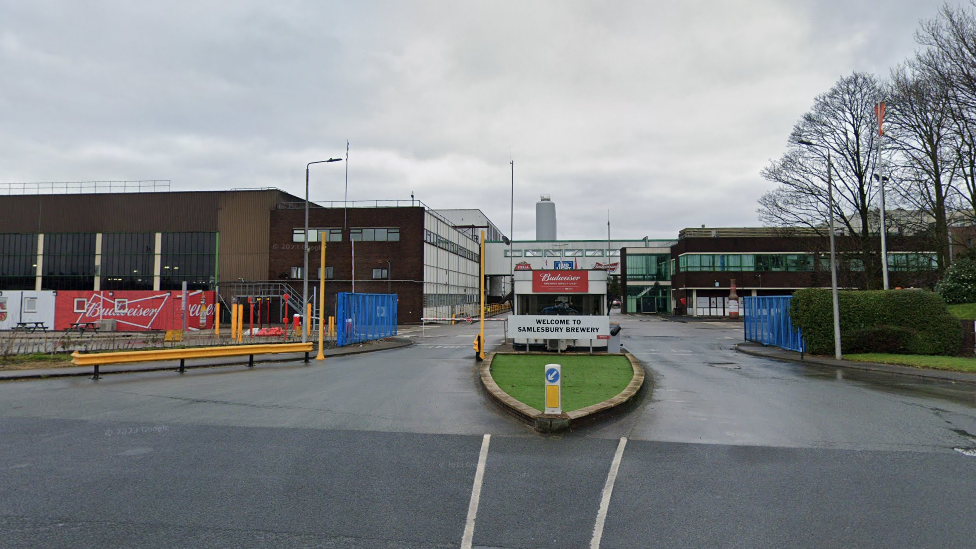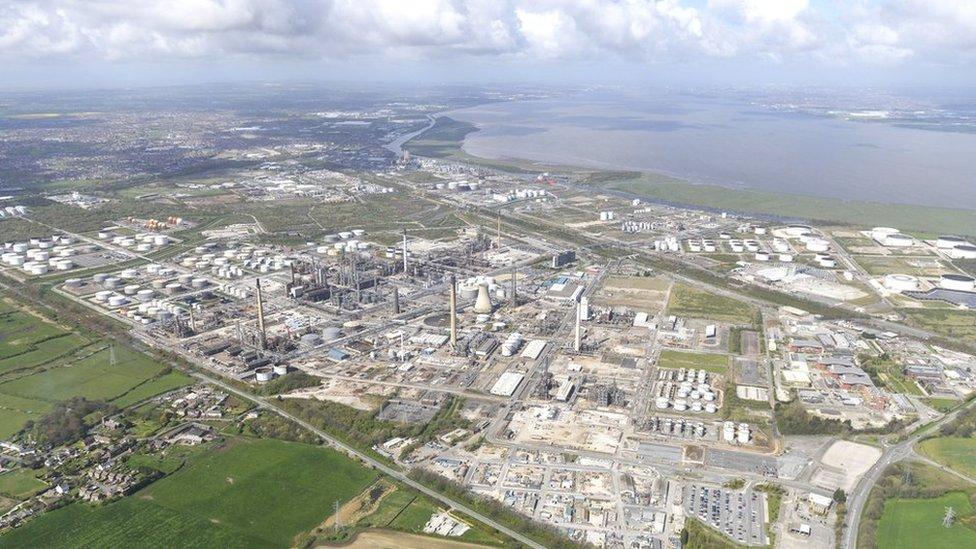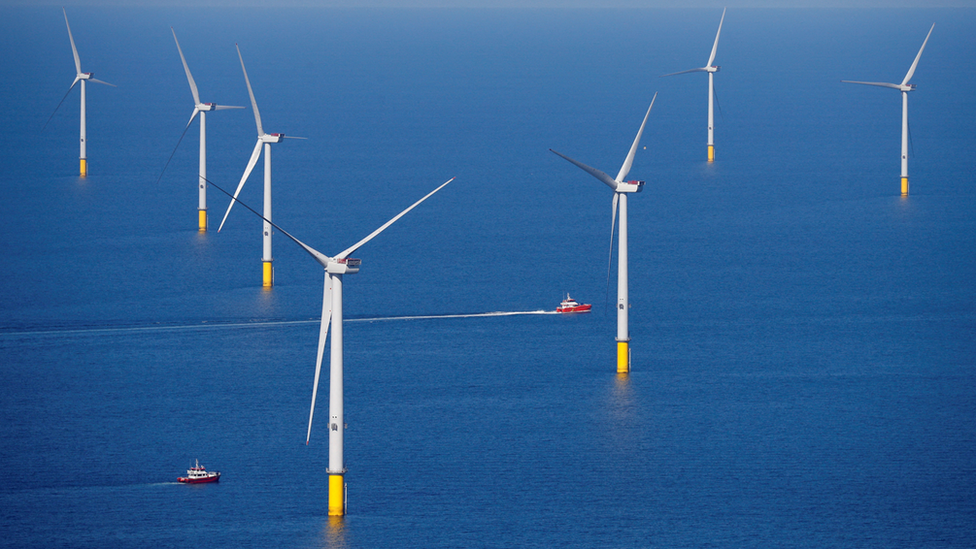Brewery's hydrogen plant approved despite gas pipeline concerns
- Published

The brewery has been given permission for the facility to be built at its Cuerdale Lane site in Samlesbury
A brewery is set to shed the 11,000 tonnes of carbon emissions it generates each year after it was given the green light for a hydrogen production facility.
The development would be constructed on greenbelt land next to the AB InBev brewery in Samlesbury, Lancashire.
A planning committee member had cited safety concerns regarding a gas pipeline running through the site.
The firm behind the plans insisted it was "safe".
Councillor Peter Mullineaux said he was "flabbergasted" by South Ribble Borough Council's planning committee decision.
"If there was an explosion, it'd be catastrophic," he said.
Dominic Page, representing Salmesbury Net Zero Ltd, told the committee a test site operated by the firm in Wales used "similar technology" to that proposed by Salmesbury and had "demonstrated that hydrogen can be captured safely and efficiently for commercial use".
The proposed facility, which would be built at the Cuerdale Lane site, would use a process called electrolysis - which works by using electricity to split water into its constituent parts, hydrogen and oxygen.
The hydrogen gas is then captured, while the oxygen is released into the atmosphere. It will enable InBev to operate its boilers using hydrogen instead of natural gas.
In further written objections, residents voiced environmental, highway and hydrogen-related concerns.
Planning officer Debbie Roberts told the committee that Cadent - the company responsible for the gas pipeline - had not objected, on the condition that a detailed plan would be presented to them, and would have to be agreed on before work could begin.
Committee member Haydn Williams said of the hydrogen development: "Somebody somewhere is going to have to be the first to do it and I think we should be the first to do it."
A proposal by Mr Mullineaux to refuse the application was defeated by eight votes to two and the blueprint was then approved by the same margin.
However, national planning regulations mean that when a local authority approves an application for major development that would have "a significant impact on the openness of the greenbelt", the secretary of state must be notified.
This triggers a 21-day period during which the government can decide whether it wants to "call in" the council's decision for further consideration.

Why not follow BBC North West onFacebook, external, X, external, andInstagram, external? You can also send story ideas tonorthwest.newsonline@bbc.co.uk, external
- Published4 March 2021

- Published10 January 2024

- Published17 February 2023
